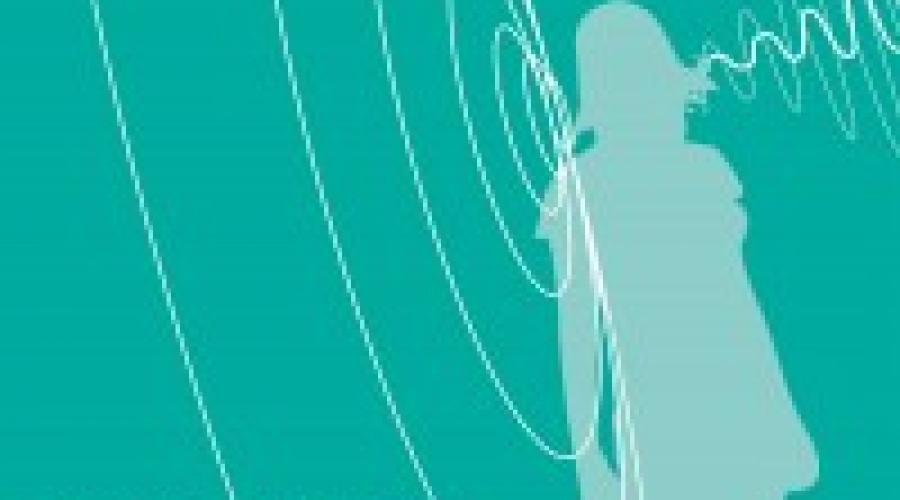Archive
CNMAT Flashback
A look back at some items in our archives.
BAASICS2: The Future
Kid-Simple: a radio play in the flesh by Jordan Harrison, Directed by Caitlin Marshall
Archive Browser
Labyrint, for saxophone and orchestra
I started writing _Labirynt_ while I was on a Fulbright grant in Poland. The spelling is polish, although
the word is ancient. In retrospect though, it seems to be a very American piece. I also started with the
idea of not writing a concerto, but rather a piece for soloist and orchestra that was more cooperative.
But, oftentimes compositions go their own ways.
FACE project (French-American exchange)
A three-year project involving CNMAT/Music Dept./UC Berkeley and the Centre National de Création Musicale (CIRM), the Conservatoire National de Région de Nice (CNR), and the Université de Nice Sophia-Antipolis (UNSA). The scope of the documentation will include text, photos and audio samples from participating student annd faculty composers.
Pin and Port I/O
Two methods are provided to interact with digital and analog I/O pins--at the individual pin level, and in pin-groups at the "port" level. The port mode is used for high-speed reporting of inputs. The pin/port message names are dependent on the hardware platform and correspond to the silk-screened names. The examples here use /ra and /rb consistent with the Sparkfun Bitwacker--for the CUI the equivalent would be /a, /b, /c, /d and /an.
The value of an analog input pin is reported as a floating-point number normalized to the range [0.0 - 1.0], inclusive.
Analog to Digital Converter
-----
**/ra/0/vp** : Get/set ADC Vref+
**/ra/0/vn** : Get/set ADC Vref-
This message is only understood by a pin with analog input capability.
Using Subversion
What is Subversion?
Subversion ("svn") is a version control system; it manages successive revisions of files, keeping track of the latest version of each file, which versions of other files are associated with particular versions of a file, etc. It can be used to:
$CNMAT_MAX_DIR Environment Variable
By default a MaxMSP XCode Project must live in cnmat/trunk/max/(dir1)/(dir2)/(dir3) so that the relative path "../../../makefile.per-object" points to the shared makefile. Typically this relative path "../../../" is also used in the XCode build settings to locate the relevant c74support directory and its header files.
Highspeed Mode
Highspeed mode is a compile-time option that increases the reporting rate to 1000hz, and uses a different encoding strategy for port and pin reports with a compact OSC bundle.
In this mode the port report is "/r" and contains all pin data in a single OSC blob. The format varies depending on the platform.
Interrupt-on-Change
-----
**/rb/int** | **/b/int**: Report interrupt-on-change with high precision timing
Multiplex Driver
**/ra/0/mux**: Get/set multiplexing output mode
The multiplex driver lets the user configure a digital output pin to control many types of multiplexing including multiplexing ICs, shift registers, slave-select, scanned element arrays, charlieplexing and counters. However note that this implementation is generally not fast enough for flicker-free LED lighting control.
References
Alain, C., Woods, D. L., & Knight, R. T. (1998). A distributed cortical network for auditory sensory memory in humans. Brain Research, 812, 23-37.
Aslin, R.N., Saffran, J.R., Newport, E.L. (1998). Computation of conditional probability statistics by 8-month-old infants. Psychological Science, 9(4), 321-324.
Max/MSP Object Programming
This book contains all of CNMAT's documentation on how to write, compile, and release Max/MSP externals on multiple platforms, using Subversion for version control of the source code.
Artist Release form
When recording a concert, have the performer(s) fill out and sign the CNMAT Release Form.
How to Make a New External
How to make a new external
RTFM
For documentation on the C coding part of writing externals, especially including the API that Cycling 74 provides for writing externals, the Max/MSP SDK comes with a large PDF file called WritingExternals.
2008 Sensor Workshop Schedule and Syllabus
English Version
Instructor: Aaron Einbond (CNMAT, University of California Berkeley)
##Schedule:
The workshop runs Jan 22-25, 9:30 AM-5 PM (Lecture 9:30-11:15, coffee break, briefing & start of lab session 11:30-12:30, lunch break 12:30-2, lab session with instructor support 2-5)
Stage Max/MSP à Nice, France : 22-25 janvier 2009
Stage Max MSP Jitter organisé par le CIRM et le Conservatoire à Rayonnement Régional de Nice du 22 au 25 janvier 2009 avec les outils pédagogiques du CNMAT de l'Université de Californie à Berkeley.
Instructeur : Aaron Einbond (CNMAT, Université de Californie à Berkeley)
##Planning : de 9h30 à 17h chaque jour
9h30-11h15 cours commun
11h15 pause café
Vendredi Laboratoire
##Exercice:
- réalisation d'un séquenceur à partir d'un petit système de synthèse additive
#Patches fourni :
- "simple-sinusoids~" : une abstraction qui utilise l'objet spectral du CNMAT, sinusoids~, pour fair la synthèse additive. Voir aussi le fichier d'aide fourni.
- "simple-sequencer" : un patch qui lit une "partition" à partir d'un objet coll.
#À faire :
Samedi Laboratoire
##Exercise :
- réalisation de resonateurs polyrhythmiques
#Patches fourni :
- "simple-resonators~" : une abstraction qui ouvre et lance un modèle de résonance avec une impulsion.
- "resonant-colls" : un patch qui lit des modèles de résonances fournis par plusieurs colls.
#À faire :
2 - Vendredi: Jouer des notes
#Sujets :
- manipuler les listes
- lire et gérer les données
- CNMAT's Open Sound Control (OSC)
- synthèse additive avec les outils de CNMAT
#Objets :
- pack, zl, collection
- select, route
- OSC-route
- sinusoids~
#Exercice:
- réalisation d'un séquenceur à partir d'un petit système de synthèse additive
1 - Jeudi: Faire du son
#Sujets :
- objets, connections
- introduction aux données signal
- ordre d'opérations, entiers et flottantes
- patches, subpatches, abstractions
- organisation des fichiers dans le "search path"
#Objets :
- GUIs : messages, commentaires, entier, flottante, button, toggle
- print, maths
- trigger, metro
- gain~, dac~, ezdac~
- buffer~, play~, sfplay~
#Exercice :



